In the world of tools and equipment, innovations and improvements continually shape and reshape what is available on the market.
Fiberglass ladders, for instance, have been hailed as a revolutionary product that combines durability and strength with lightweight convenience.
However, it’s not all rosy on the fiberglass front. There are some serious disadvantages of fiberglass ladders as well, which need to be addressed.
In this article, we aim to shed light on the lesser-known disadvantages of fiberglass ladders that every consumer should be aware of.
From unanticipated costs to potential safety issues, we will go beyond the manufacturers’ claims to provide an unbiased evaluation of these commonly used tools.
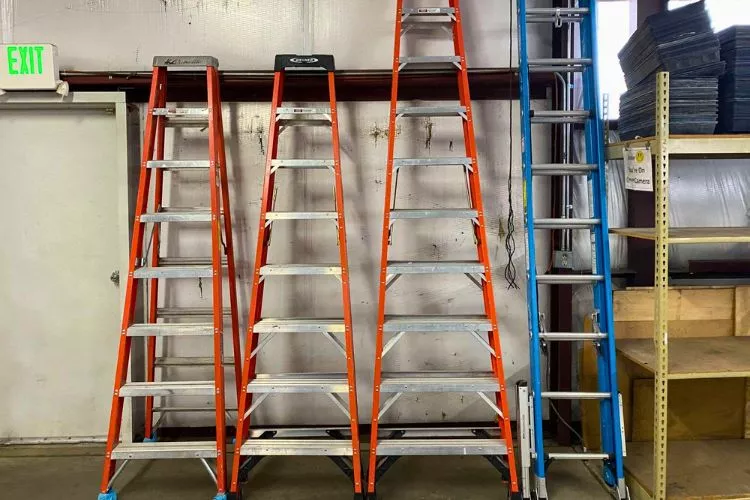
Quick Recommendations
7 disadvantages of fiberglass ladders
While fiberglass ladders are renowned for certain advantages, it’s worth taking a closer look at the not-so-prominent downsides to gain a comprehensive understanding before deciding on a purchase.
- Cost Considerations: Fiberglass ladders certainly give bang for your buck in terms of strength and longevity, but they come with a higher upfront cost. If you’re on a tight budget or don’t frequently require a ladder, this economic factor could be a pertinent disadvantage.
- Weight and Portability: One common misconception about fiberglass ladders is their weight. Although lighter than their steel counterparts, they are bulkier and heavier than aluminum ladders. This means they can be cumbersome to transport and difficult to maneuver, especially for those with limited strength.
- Weather Impact: Fiberglass is typically resistant to weather elements, but extreme temperatures can be a problem. In the scorching heat, fiberglass ladders may warp, reducing their lifespan and reliability. Cold, too, can make the material brittle and prone to cracking.
- Maintenance: While fiberglass does not corrode like metal, it requires regular maintenance. The material can fade and become brittle over time, particularly when exposed to the sun. Therefore, storing a fiberglass ladder means finding a space that is dry and shielded from direct sunlight.
- Aesthetic Appearance: A minor, albeit noteworthy disadvantage is aesthetic concern. Over time, fiberglass can lose its color due to UV exposure, resulting in a less than attractive look. While this won’t affect the ladder’s function, it’s undoubtedly a downside for those who prefer their tools to maintain a clean, professional appearance.
- Formation of Cracks: Like many materials exposed to continuous sunlight, fiberglass ladders are susceptible to ultraviolet (UV) radiation. Constant UV exposure can cause fiberglass to become brittle and form cracks on the surface—a phenomenon known as “fiber blooming.”
Over time, these cracks can undermine the ladder’s structural integrity, jeopardizing its dependability and safety standards. Moreover, the weakened ladder is likely to have a shortened lifespan, leading to the need for more frequent replacements. - Deterioration Due to Dust and Sand: Fiberglass ladders, unlike their metal counterparts, are indifferent to rust—but their vulnerability surfaces in dusty and sandy conditions. Dust and sand particles, particularly when mixed with water, work like abrasive material on the fiberglass surface.
This prolonged exposure fuels gradual deterioration, consequently inflicting the ladder’s sturdiness and overall quality. The structural damage can make the ladder unstable and unsafe for use over time.
Besides, the diminished quality of fiberglass can also require more frequent maintenance and eventually, earlier replacement—both of which can be cost-intensive.
Do Fiberglass Ladders Deteriorate?
Yes, fiberglass ladders do deteriorate over time. The rate of deterioration depends on various factors such as usage, maintenance, and exposure to harsh conditions.
Constant exposure to UV light can cause the fiberglass to become brittle, leading to the formation of surface cracks, a phenomenon known as “fiber blooming”. The ladder’s surface also tends to fade and chalk over time due to UV degradation.
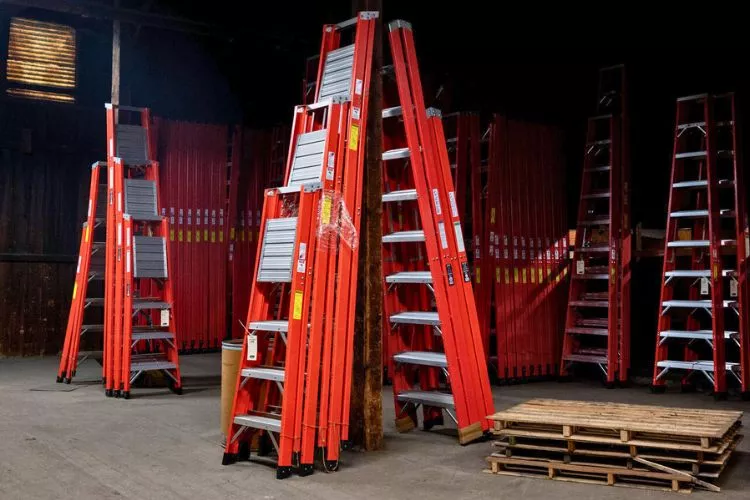
Moreover, fiberglass ladders are also susceptible to the abrasive effects of dust and sand. These elements, particularly when mixed with water, can cause wear and tear on the ladder’s surface, thus contributing to the degradation of the ladder’s strength and overall quality.
How Long Will a Fiberglass Ladder Last?
The typical lifespan of a fiberglass ladder can range from 10 to 20 years. However, the actual lifespan can vary based on how often the ladder is used, how well it is maintained, and whether it is stored properly.
For instance, a ladder that is used every day for heavy-duty tasks might not last as long as a ladder that is used less frequently. Similarly, a fiberglass ladder that is regularly cleaned, checked for damage, and stored in a sheltered, dry place out of direct sunlight will likely last longer than a ladder that is not well maintained.
How Often Should You Replace a Fiberglass Ladder?
The exact timeline for when a fiberglass ladder should be replaced depends on several variables, including the dates suggested by the manufacturer, how often the ladder is used, and the conditions it is exposed to.
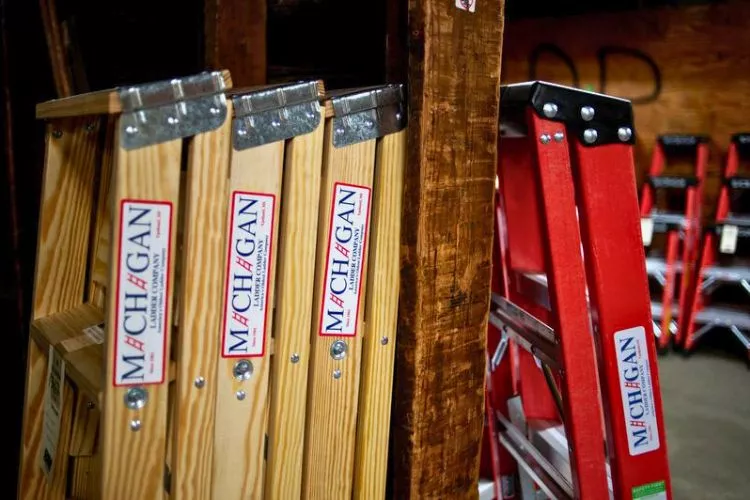
However, rather than sticking to a specified timeline, it’s crucial to assess the condition of the ladder regularly. If any signs of damage are noticed, such as cracks, warps, corrosion on the metal parts, or loose steps, it should be replaced immediately—a damaged ladder is a safety risk regardless of its age.
For professional settings where ladders are subjected to heavier usage, regular inspections are a must, and replace should be considered around every five years. For home use, where a ladder may undergo less stress, replacement can be less frequent if the ladder maintains a solid condition.
To ensure optimal safety, always follow the specific guidelines provided by the manufacturer about the use and maintenance of the ladder.
Are fiberglass ladders worth it?
Fiberglass ladders are generally considered worth it due to their durability, strength, and suitability for electrical work. They are less likely to bend compared to aluminum ladders and provide a stronger platform for supporting heavy loads.
Additionally, they don’t conduct electricity, making them an ideal choice for electrical work or use around power lines.
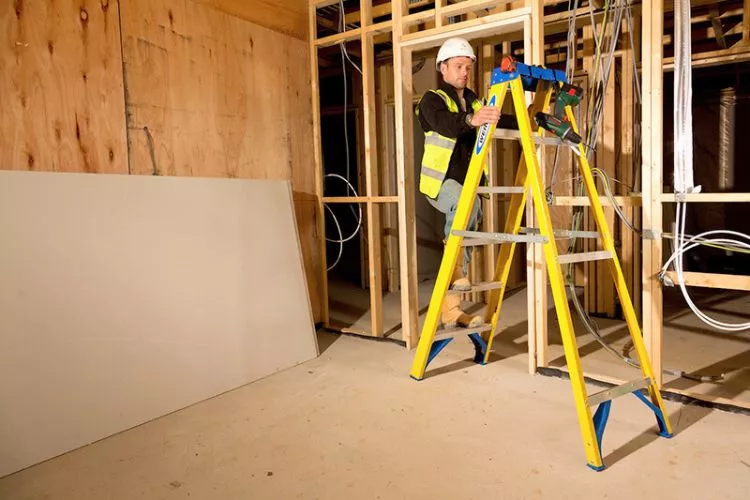
However, there are some drawbacks to consider. Fiberglass ladders tend to be more expensive than aluminum ladders, heavier, and require more maintenance. Also, deterioration can occur due to UV exposure and abrasive elements like dust and sand.
Ultimately, the decision of whether a fiberglass ladder is worth the investment depends on your specific needs and priorities. If your main concerns are safety and durability, particularly for electrical work, then a fiberglass ladder could be worth the additional expense.
On the other hand, if portability and cost savings are your priorities, an aluminum ladder may be a better fit.
Which ladder is better: fiberglass or aluminum?
Choosing between a fiberglass and an aluminum ladder really comes down to the task at hand, and both types have distinct advantages and disadvantages.
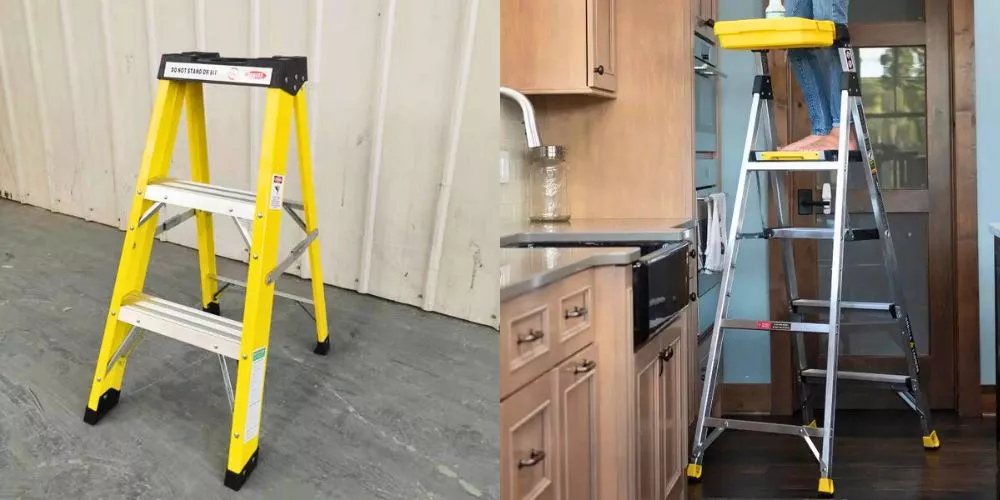
🪜 Key Considerations
- Aluminum ladders are lightweight, portable, and resistant to corrosion. They are also generally cheaper and require less maintenance than fiberglass ladders. However, they conduct electricity and are not suitable for working around power lines. They can also heat up quickly when used outdoors in sunny weather.
- Fiberglass ladders, on the other hand, are much stronger and can withstand a higher load capacity. They do not conduct electricity, making them safer when working near power sources. However, they are higher in cost, heavier, and require more maintenance.
In terms of durability, fiberglass can resist scratches, dents, and peeling better than aluminium, allowing them to last longer. However, aluminum ladders tend to be more durable in terms of withstanding outdoor elements as they don’t warp or crack in heat or cold.
So to determine which ladder is objectively better would be inaccurate, as it truly depends on the use case and personal requirements of the user.
Aluminum ladders could be a better choice for users prioritizing lightweight portability and affordability, while fiberglass ladders could be the right option for those needing higher weight support and safer electrical work environment.
Should electricians use ladders made of fiberglass or aluminum?
Electricians should use ladders made of fiberglass over aluminum ladders. This preference is primarily due to fiberglass ladders not conducting electricity, making them a safer option when working around power lines or during electrical tasks.
Additionally, fiberglass ladders possess higher shear strength, ensuring they can withstand heavy loads and resist bending more effectively than aluminum ladders.
Although fiberglass ladders may be heavier and costlier than their aluminum counterparts, the added safety and durability make them a worthwhile choice for electricians.
Conclusion:
While fiberglass ladders are considered durable and safer for electrical work, they come with notable disadvantages. These include their higher cost, heavier weight, increased maintenance, and vulnerability to UV degradation and abrasive elements.
Users should carefully evaluate their needs and priorities before making a decision. It is essential to recognize that choosing between fiberglass and alternative options, such as aluminum ladders, heavily depends on the specific requirements of the task at hand.
By understanding the disadvantages of fiberglass ladders, users can make well-informed choices for their individual situations.





